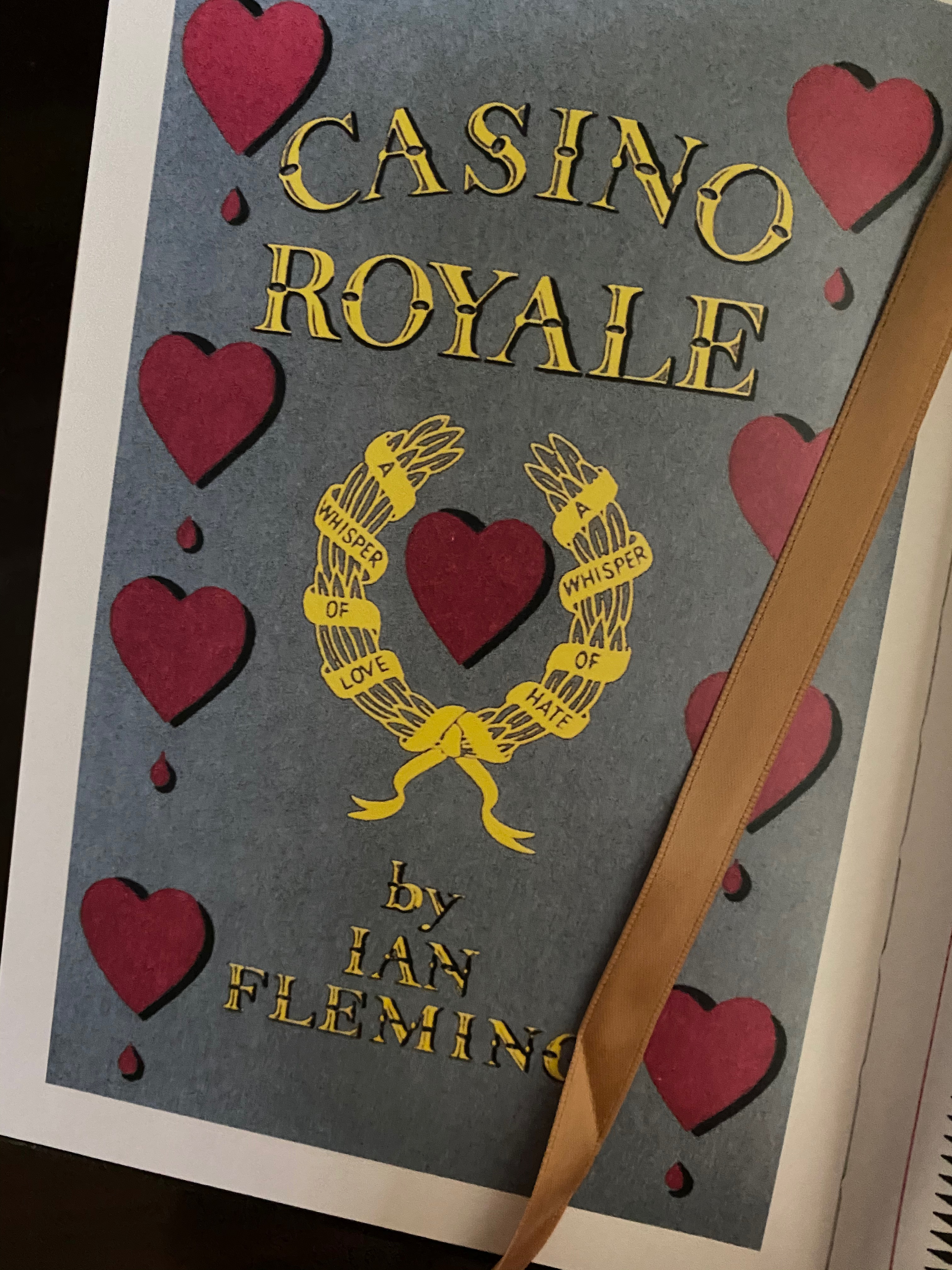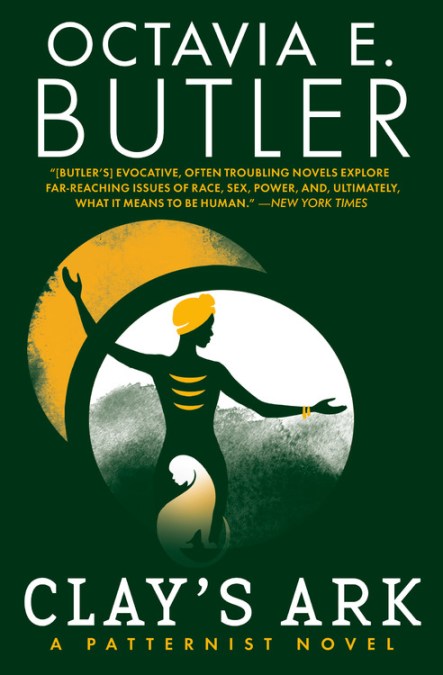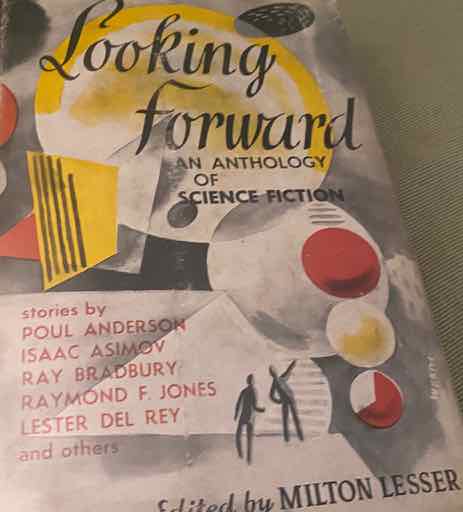 Image ©2020 by B H Triber |
Revisiting Fleming’s Casino Royale |
GENERAL SPOILERS FOLLOW.
The subject of this essay is 68 years old. You’ve likely read it by now, but in case you haven’t, be warned.
I originally picked up Fleming’s Casino Royale in high school. Our public library had copies of all the books, and, after growing up with Connery, Lazenby and Moore, I mistakenly believed I was familiar with the source material. I worked my way sequentially through all the Bond books that summer before senior year, and Casino Royale was the first.
That was nigh on 30 years ago for me. (Allow me to moisten my throat on warm tea and polish my glasses as we reminisce…) Back then, of course, the only Casino Royale visually available was the 1967 drug-induced head trip of a comedy by the titular name, with a handful of directors headed by Val Guest and John Huston, and Bond being played by David Niven, Peter Sellers, Woody Allen, and countless others popping up like whack-a-mole 007s. The black and white feature for television was only a distant memory to aficionados, since VHS and BetaMax were slugging it out at the time, the Laser Disk had just bit the commercial dust, and HBO was still relying on Fraggles and Not Necessarily the News to expand their customer base.
So, I picked up the book, and was transported away into the fictional spy antics of Bond. Now, by way of comparison, the original Casino Royale film only had one or two scenes at the most with any scrap of attachment to the source material. The 2006 Martin Campbell offering, with Daniel Craig, by comparison, is much more faithful to the source, duplicating most of the scenes from the book, while adding supporting scenes to round out the story structure of a film. I am a firm fan of both films, for different reasons. The most recent, because it was the film that got the literary Bond right (runner up to Living Daylights, also mostly faithful to the short story with additional supporting material), and the 1967 version because, well, Woody Allen, David Niven, Orson Wells, Peter Sellars and Ursula Andress.
Now, for the book itself — it is difficult to discuss any work of classic fiction (which, first published in 1953, there is no doubt of the book’s impact on pop culture or its global universality) without also discussing the context of settings. Casino Royale was published during what is now recognized as the early years of the Cold War — a time during which spying technologies and techniques experienced a renaissance behind the veil of classifications, and the tensions of upmanship of necessity. Everybody was afraid of dying in a nuclear holocaust, the US (and by extension, the UK and other members of NATO) and the USSR were vying for nuclear, air, naval, and space superiority. All to make sure the other guys were so afraid to kill us that they wouldn’t risk death themselves. And, so, the Cold War of secret deaths was fought on the global battlefield.
Fleming, meanwhile, having worked British Intelligence during World War II, retired to “Goldeneye”, his home in Jamaica, to pen his own experiences into his ideal of the British spy. There are a few points which one notices going through Fleming’s works as a collection, and many of those points can be difficult to confront without recognizing that Fleming was a man of his time. He lived in a sexist, racist, homophobic, biphobic and transphobic world. All of that reflects in his writing, and then some. But there is also a purpose, for the most part.
During the Cold War, most nations engaged in spycraft to collect information on their enemies, including any factor that might be used to blackmail an individual or their country. (For comparison, until and after DADT, people were still being ousted from the US military with the justification that their sexuality could be used to blackmail or coerce a member of the armed forces.)
This attitude is reflected in the way race, gender and sexuality are treated in his novels — they are facts to be collected, tools in a long war of propaganda. And this attitude is also reflected in Bond’s actions in the stories. He is the conquering Englishman come to win the women in his path, and harshly judgmental of them upon inevitable rejection.
Usually the bigotry stops with the character, only occasionally seeping into the narrative point of view. The real question for me is, how much is too much? Well, Casino Royale never really devolves into a woman-hating scree. Despite Bond’s passing rape fantasies and, as in the film, his report back to M that “the bitch is dead,” the language never passes that point of insult into obscenity, in the 1950’s censorship usage of the phrase. I think it’s a matter of reader maturity to parse the prose as a product of its day.
The story, about bankrupting Le Chifre during a baccarat tournament, is quick-paced. The voice in Bond’s head is cinematic in some scenes — right in the middle of the book he enumerates all the players’ qualities and develops strategies to deal with them on the fly. One can see Bond walking across the casino floor while slipping wads of cash into his dinner jacket.
The alluring Vesper Lynd has been assigned to watch Bond by the home office. She’s the pursestrings on the project, and he has to convince her his methods are sound before she’ll loosen her strings. On the way, the sexual tension between them leads to a harsh lesson for 007 about romance during spying, but not before Bond convinces himself he will marry her.
In this story, Le Chiffre is a bit heavier than portrayed by Miles Mikkelsen, and a bit more of a bottom dweller. When he strips bond to torture him, we’re unsure at first if this will involve more. But, Le Chiffre still has that characteristic Fleming character flaw that every enjoyable Bond villain has, like Scaramanga’s third nipple, or Bloefeld’s attached ear lobes — in this case he cries blood.
It turns out Bond is rescued by SMERSH, and not SPECTRE, as in the films — that was an invention to round out the storytelling for the quadrilogy with Quantum of Solace, Skyfall and Sprectrerounding out the story cycle. SMERSH, as a truly devoted Bond fan can tell you, is short for the Russian Smiert Spoinam – “death to spies” – a KGB agency that sends operatives out to assassinate foreign spies. Smersh could not exist in a modern Russia after the Cold War, and so was necessarily changed for the film franchise. It is central to the context of the novel, however. Bond is not Smersh’s target. Le Chiffre was, so they leave him alive. He is then hospitalized and visited variously by Mathis and Vesper, until…
Well, the rest of the book is waiting to be discovered if you want to read it. Be warned, however, that sexism is the lifeblood of Bond’s character, right up until On Her Majesty’s Secret Service, when he really does marry the girl of his dreams.















